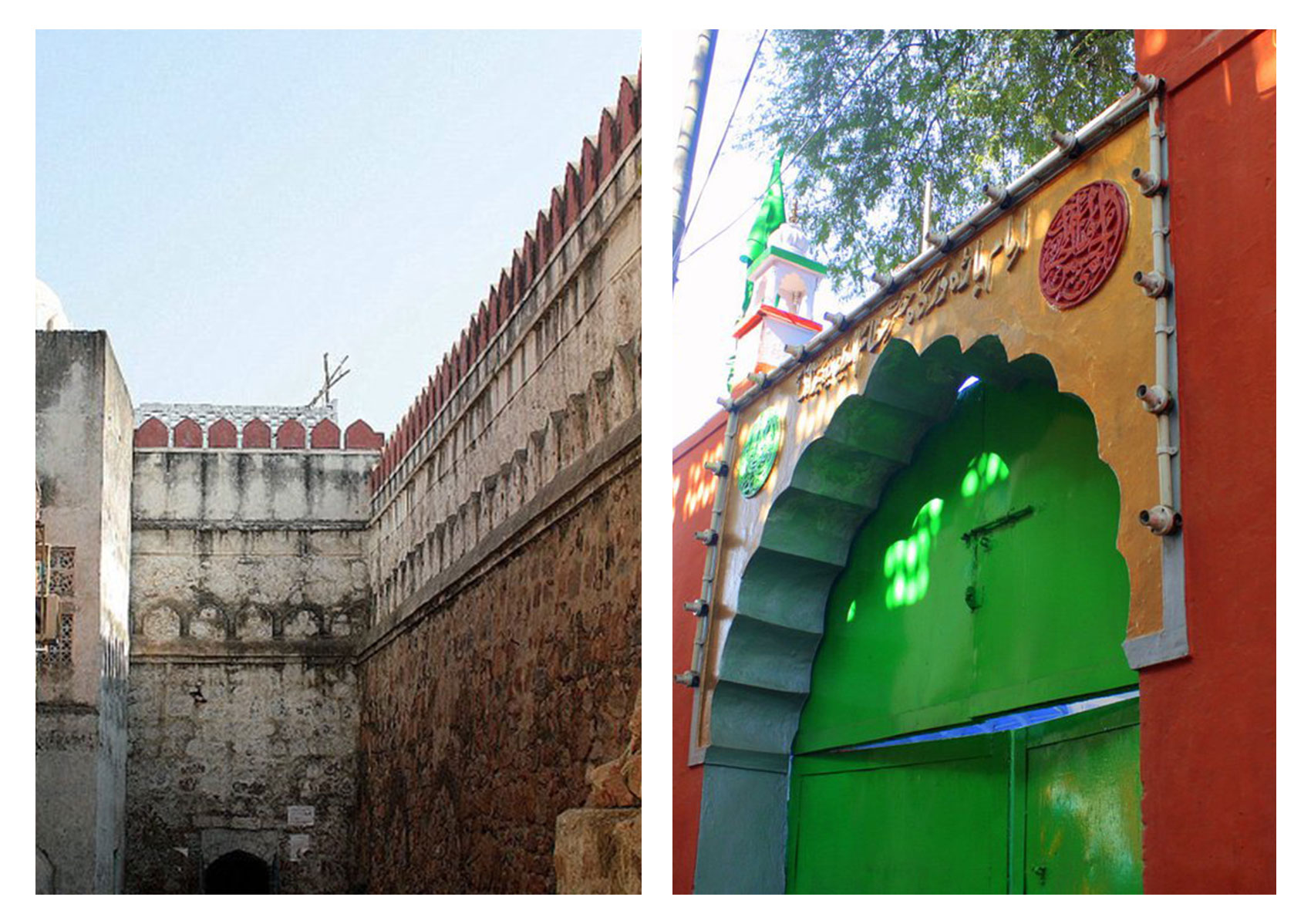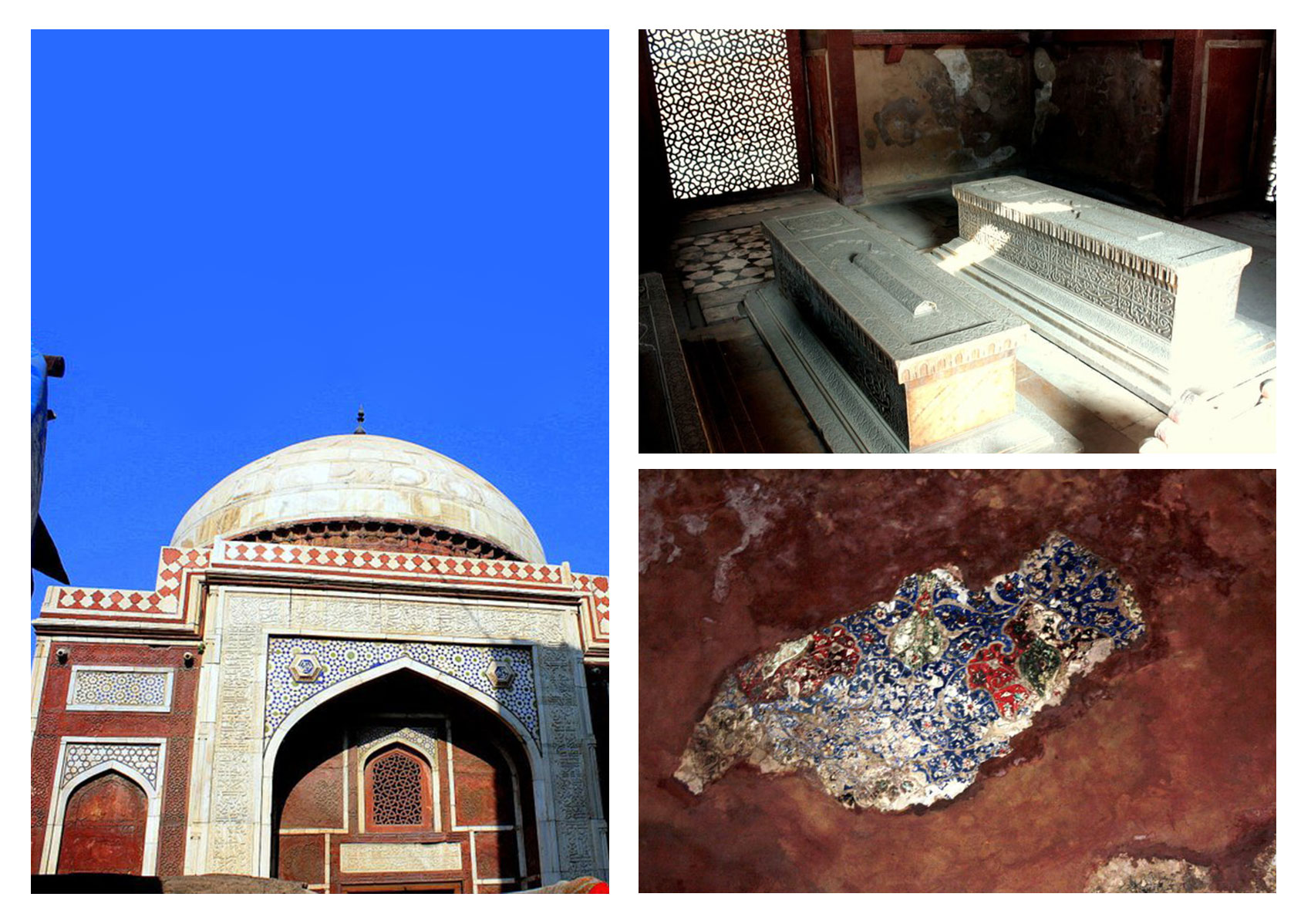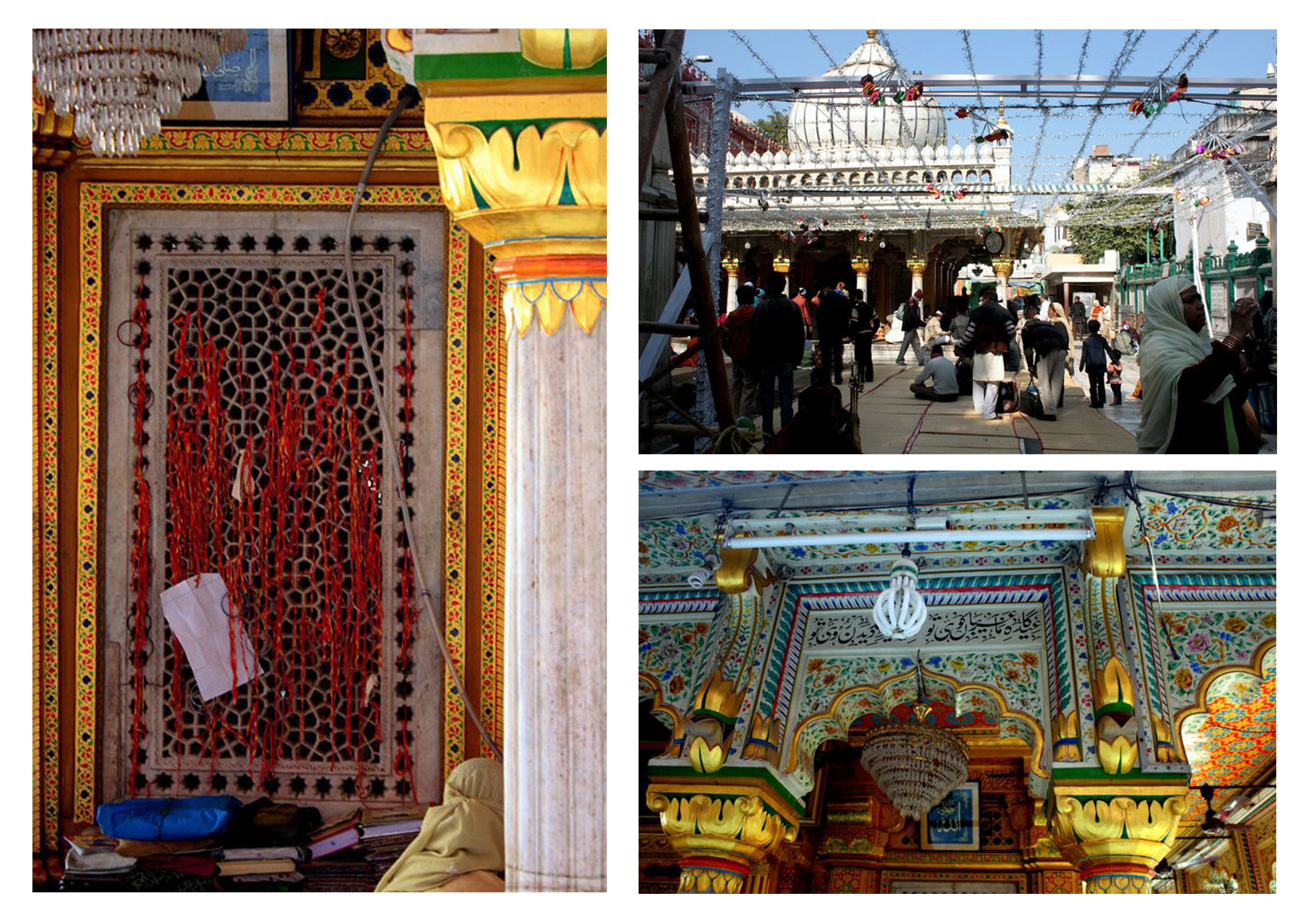It was on one of those lazy Sunday mornings when the sun rays were searching for a way to seep through the fog. After a grueling week at work, exploring a part of Delhi which is often said to be the escapist paradise for the spiritual seekers, was on the cards.
Nestled in Delhi’s old quarter, the tomb of Hazrat Nizamuddin Auliya Chishti, a 14th century humanitarian Sufi and mystic saint, draws people from across the globe to come and pay their respects. The surrounding area around the tomb called the Nizamuddin Basti is rarely a part of any tourist’s Delhi itineraries. It is in these narrow lanes that Islamic architecture, spiritualism and culture flourished for several centuries. Hence where we will take you now.
The Archway

First of all the only way to enter the area is through a 4-feet low arch that opens to a snake-like lane called the Phoolonwali Gali. This gateway is the only surviving structure from the original wall that once enclosed the whole settlement.
Phoolonwali Gate
Phoolonwali Gali, literally translated to Flower Lane, was a flower market during the 14th century Khalji dynasty and was said to be the largest in the world. Lost amidst the erratic construction of houses, the only evidence of this once-upon-a-time bazaar is a 10-feet tall iron gate.
Graves
I noticed every nook and cranny of the basti had a trivia waiting to be heard. Curious to find graves and tombs after every two steps, I asked a passerby about it. They told me that people residing here believe the graves of the loved ones should be buried near their own homes so that the departed’s blessings are forever upon them.
Kalan Masjid

My next stop was Kalan Masjid, (Black Mosque). From the entrance of the mosque, which is some 600 years old, one could see the illusioned paralleled pillars standing in a file.
Urs Mahal
Further on through the narrow, winding lanes, I reached the Urs Mahal. This houses the famous Chausanth Khamba tomb built by Mirza Aziz Koka, who served under the Mughal Emperor Jehangir.
Facing the courtyard the beautiful marble structure of Chausanth Khamba shimmers under the sun. The structure is named for its sixty four pillars that support the roof. Which happens to look flat from the outside, but is in fact dome-shaped. There are ten tombs inside, two of which belong to Aziz Koka and his wife. The marble gossamer carving on the wall brought in the sun rays forming beautiful reflections in the glittering marble flooring.
Ataga Khan’s Tomb

Mughal Emperor Akbar’s Prime Minister Ataga Khan’s tomb reflects a unique blend of Islamic and Indian art. Persian carvings have been erased on the walls, leaving patches of it at some places.
Mirza Ghalib Tomb
One of the most famous 18th Century Urdu poets, Mirza Ghalib has his shrine housed in the Nizamuddin Basti. Resting in a marble courtyard, decorated with ornamental patterns. The poet’s tomb gives life to one of his own couplets inscribed on a marble slab in Urdu as well as English, which says:
When nothing was, then God was there,
Had nothing been, God would have been;
My being has defeated me
Had I not been, what would have been
Hazrat Nizamuddin Auliya Dargah

Finally, my walk at Nizamuddin Basti wouldn’t have reached a better conclusion without a visit to Hazrat Nizamuddin Auliya Dargah. It’s 700 years since the death of the Sufi saint, yet people still believe all their wishes will be fulfilled by him. Hundreds of people from all religious backgrounds come here to pray, tie the wishing thread and seek his blessings. Hazrat Nizamuddin Auliya believed in the power of music and poetry to be able to attain God. Every Thursday evening, sufi musicians in and around the city gather and sing devotional songs, remembering the teachings of the sufi saint.
In conclusion, this is an activity you really must undertake.